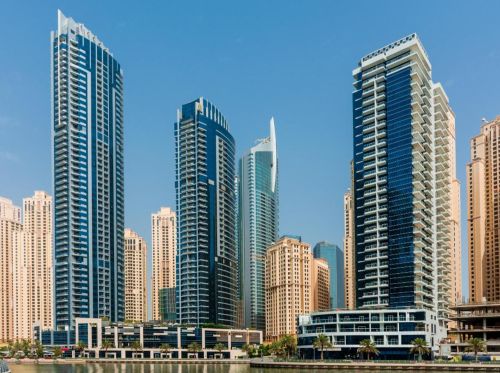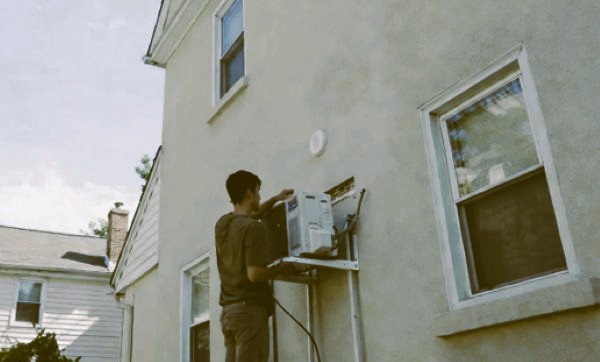

The global property business is fast-paced and for any investor looking to spread his risks around, there are two great places; the US and the UAE. In both of these markets, there are things that make it better than others, different types of investment options and returns that vary in proportion to their riskiness. This article will provide a guide for investors to make rational choices.
Market Stability and Economic Environment
Supported by a solid economy, the United States enjoys a developed, tidy real estate industry. The U.S. market has often shown resilience throughout several economic cycles because of its transparent legal system and robust property rights. Steady population increase, urbanization trends, and a strong employment market help reinforce the stability of the market.
By comparison, the UAE—especially Dubai—showcases a very young yet fast-changing real estate sector. With great attention to diversification and real estate development, the UAE’s economy has seen amazing change throughout the past decade. Although the market displays great promise, it usually exhibits greater volatility than its American equivalent. You should consider first discussing with a local lawyer in the UAE about the legal framework and obligations you have before buying real estate here.
Return on Investment
The rental yield in the two markets is very distinct. The United Arab Emirates and particularly Dubai provide some of the most attractive rental yields globally; at 5%-11% for residential properties according to the 2024 sales report by Bayut. This is much better than what is experienced as the average rental yield in most big cities of America usually lies between 2 to 8%, with an average ROI of 6.1% according to Global Property Guide.
Legal Framework and Foreign Investment
Real estate investments are well protected under the law in the United States and foreign investors have practically the same rights as local buyers. Because of this legal certainty and protection, many global investors prefer to put their money on safe investments in this country.
The UAE has taken important steps towards enhancing its legislation related to real estate investments. Some of these reforms comprise; allowing non-citizens to fully own freehold properties in designated freehold zones as well as giving long-term visas on investment property grounds.
This makes working with a knowledgeable real estate agency in Dubai is essential for foreign investors to navigate the evolving regulations and find the best opportunities.
Top Investment Locations
Top investment locations in the UAE
Let’s look at the top locations in UAE for a beneficial investment. You can look for properties for sale on Bayut, a credible real estate platform in UAE, and use its tech-driven features to compare and find the right property according to your preferences.
● Dubai Marina
A sophisticated waterfront lifestyle brings residents and investors to Dubai Marina, one of the emirate’s most desirable residential neighborhoods. This dynamic area has a gorgeous mix of high-rise residences around a man-made harbor, with many restaurants, shops, and entertainment facilities. Its appeal among young professionals and expatriates provides year-round rental demand.
Average Price & ROI according to Bayut:
- 1-bedroom: AED 1.60 million (USD 436,705)
- 2-bedroom: AED 2.57 million (USD 699,708)
- 3-bedroom: AED 4.09 million (USD 1.11 million)
- ROI: 6.69%
● Downtown Dubai
As the city’s economic hub and home to the Burj Khalifa, Downtown Dubai epitomizes luxury urban life. This upscale neighborhood’s residential, commercial, and tourism features keep property prices high. World-class facilities include the Dubai Mall, Dubai Opera, and several five-star hotels. High-net-worth investors and luxury home buyers like its central location and premium status.
Average Price & ROI according to Bayut:
- 1-bedroom: AED 2.08 million (USD 566,573)
- 2-bedroom: AED 3.94 million (USD 1.07 million)
- 3-bedroom: AED 6.48 million (USD 1.76 million)
- Average ROI: 6.10%
Top investment locations in the USA
● Austin, Texas
Rising among America’s fastest-growing IT centers, Austin attracts both young individuals and big businesses. Texas’s business-friendly climate and lack of state income tax together with the city’s dynamic culture have produced a strong real estate market. Its attractiveness stems from the University of Texas, a vibrant music scene, and outdoor leisure activities. The strong population increase in the city is still fueling demand for both commercial and residential buildings.
Median Sales Price according to Redfin:
- Condos: USD 349,000
- Single-family homes: USD 533,425
- Townhouses: USD 670,450
● Miami, Florida
Miami’s real estate scene has changed with its development as a major IT center and its unique role as a gateway to Latin America. The city draws both local and foreign investors attracted by its tropical temperature, varied culture, and tax benefits. The upscale market is especially strong, and homes on the water are selling for a lot of money. Strong tourism combined with the expanding IT industry generates many income sources for property owners.
Median Sales Price according to Redfin:
- Condos: USD 547,000
- Single-family homes: USD 740,000
- Townhouses: USD 650,000
Disclaimer: The mentioned prices and ROI are subject to change based on property size, changing market conditions, and other factors. It is advisable to consult real estate professionals and do thorough research before investing.
Conclusion
Eventually, personal investment objectives, risk tolerance, and schedules will determine which of UAE and U.S. real estate investments best fit for you. While those focused on stability and long-term appreciation would favor the U.S. market, investors looking for greater rental returns and tax benefits might find the UAE market more appealing. Investors can make wise judgments that fit their financial goals in any market by carefully weighing their investing objectives and doing extensive due research.
Frequently Asked Questions
1: What are the tax implications for real estate investors in the UAE and the US?
A: There are no property taxes in the United Arab Emirates, so overall returns can be improved. US investors have to negotiate certain property taxes that might affect profitability, on the other hand.
Q2: How does the rental market differ in terms of tenant rights and regulations between the UAE and the US?
A: The US has well-established tenant rights and regulations that vary by state, offering strong protections for renters. In the UAE, tenant laws are evolving but may not offer the same level of protection, and regulations can differ significantly between emirates.
Q3: What financing options are available for foreign investors in both markets? A: In the UAE, foreign investors can often secure financing from local banks with varying down payment requirements. In the US, financing options include conventional mortgages, but foreign buyers may face stricter terms and higher down payments compared to local investors.


